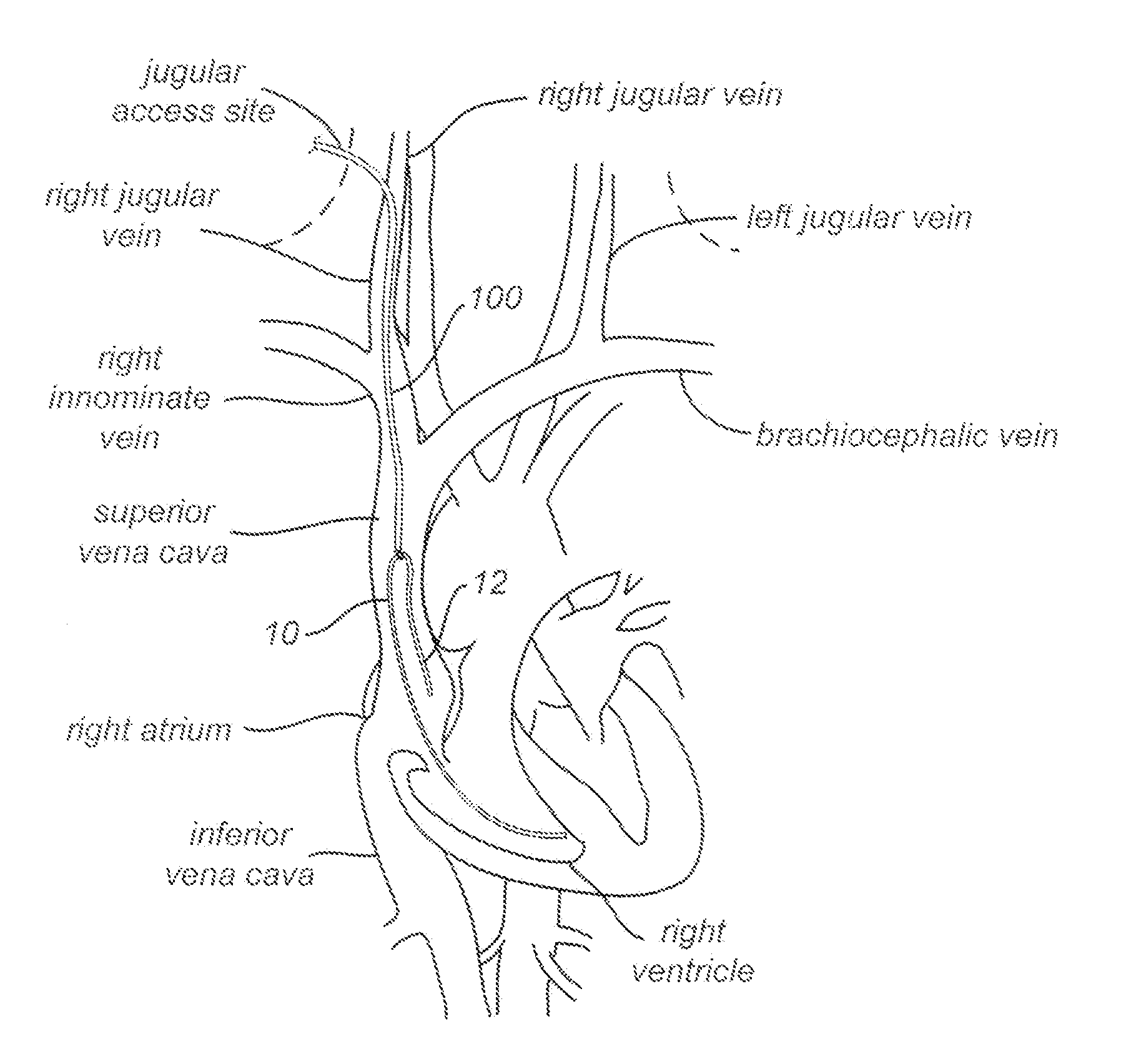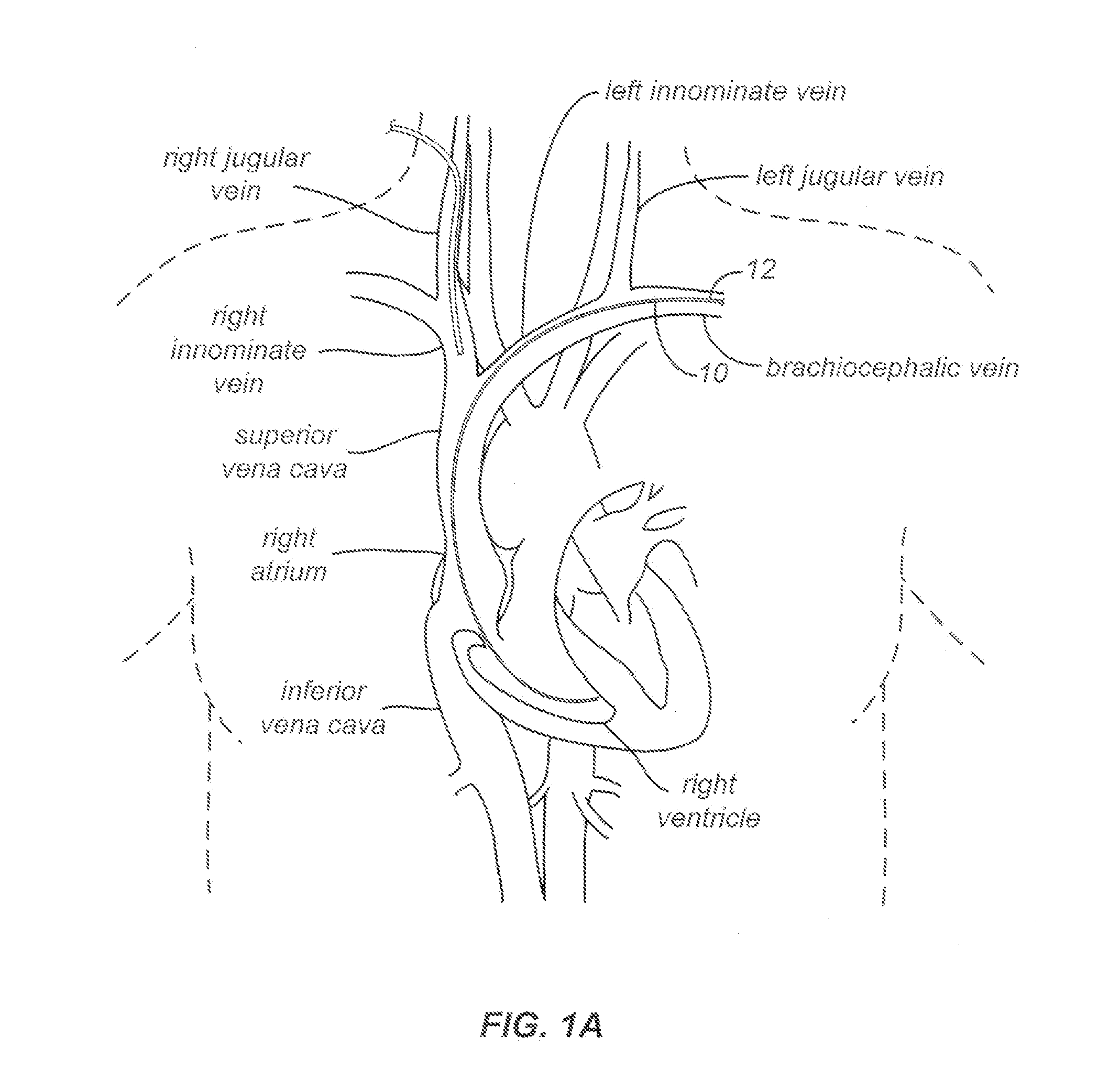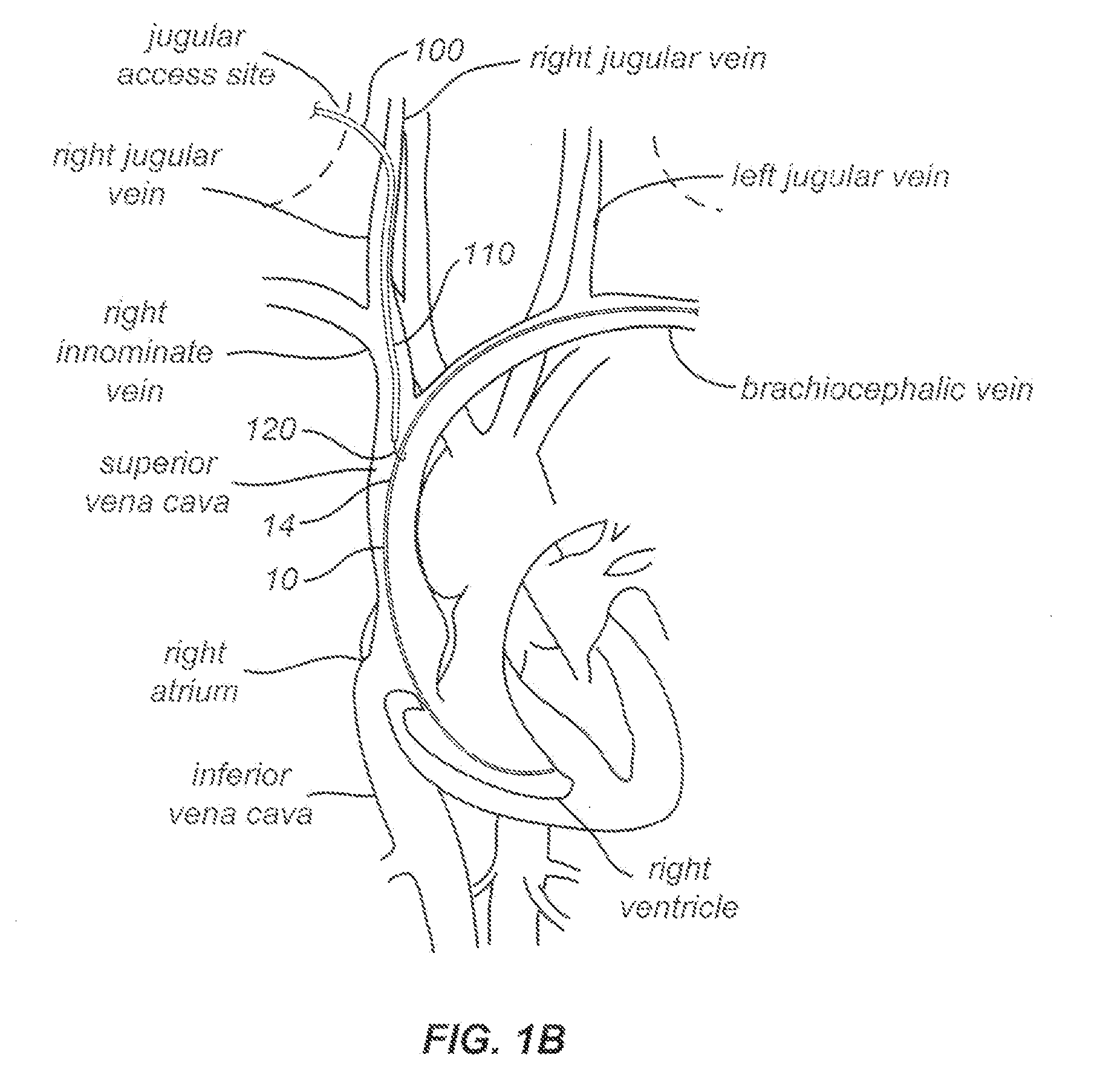Snaring systems and methods
a technology of pacing leads and snares, which is applied in the field of snares grasping pacing leads, can solve the problems of pig tail catheters that may not be well suited for grasping, manipulating free ends, and pig tail catheters that may not have limited holding capacity,
- Summary
- Abstract
- Description
- Claims
- Application Information
AI Technical Summary
Benefits of technology
Problems solved by technology
Method used
Image
Examples
Embodiment Construction
[0031]In certain surgical situations, a patient may present with a pacing lead that is no longer disposed within the pocket, but instead is freely floating in the brachiocephalic vein, the superior vena cava, the right atrium, or the like. Embodiments of the present invention provide techniques for grasping a free end of the pacing lead and maneuvering or pulling it toward the jugular vein. Exemplary approaches provide removal or snare systems that can hook, grasp, push, pull, and twist a pacing lead. Such advances allow an operator may degrees of freedom when removing a lead having a free end.
[0032]According to embodiments of the present invention, techniques may include pulling the free end of the lead down from the femoral vein using a femoral vein approach. Once the lead is located within the right atrium or inferior vena cava, the physician can use a snare device inserted through the jugular vein to grasp or engage the lead and pull it toward an opening or incision in the jugul...
PUM
 Login to View More
Login to View More Abstract
Description
Claims
Application Information
 Login to View More
Login to View More - R&D
- Intellectual Property
- Life Sciences
- Materials
- Tech Scout
- Unparalleled Data Quality
- Higher Quality Content
- 60% Fewer Hallucinations
Browse by: Latest US Patents, China's latest patents, Technical Efficacy Thesaurus, Application Domain, Technology Topic, Popular Technical Reports.
© 2025 PatSnap. All rights reserved.Legal|Privacy policy|Modern Slavery Act Transparency Statement|Sitemap|About US| Contact US: help@patsnap.com



